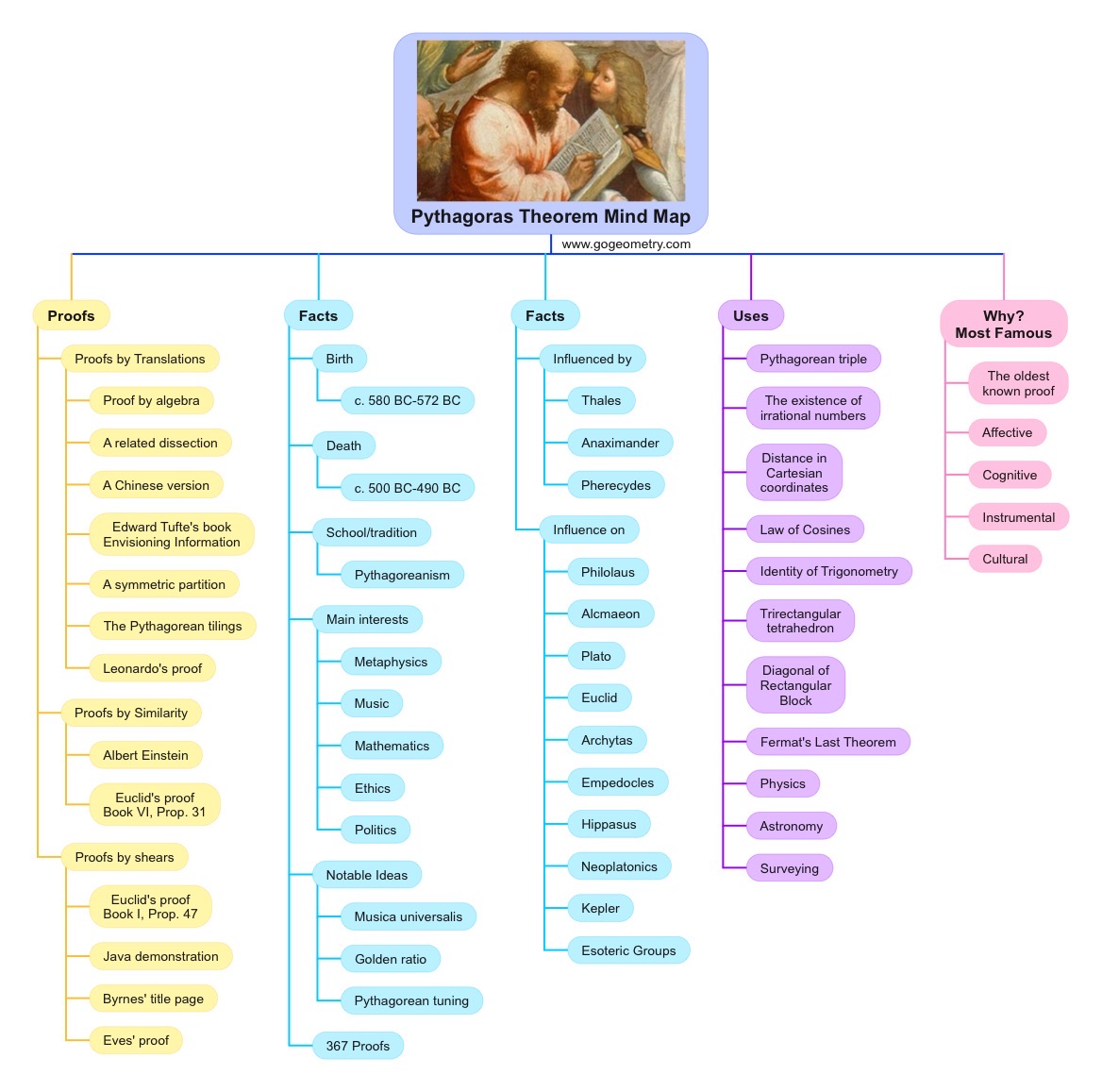|
Pythagorean Theorem
The Pythagorean theorem states that: In a right triangle, the square
of the length of the hypotenuse is equal to the sum of the squares of the
lengths of the catheti (legs): a2 + b2 = c2.
Pythagoras (born c. 580 BC, Samos, Ionia —
died c. 500, Metapontum, Lucania) was a Greek philosopher and mathematician who
discovered the Pythagorean Theorem in geometry (although none of his actual
writings are extant). By any measure, the Pythagorean theorem is one of
the most famous statement in all of mathematics, one remembered from high school
geometry class. Johannes Kepler, in the sixteenth century claimed (in Boyer,
Carl B., A History of Mathematics, N.Y.: John Wiley and Sons, 1968):
"Geometry has two great treasures: one is the theorem of Pythagoras; the other,
the division of a line into extreme and mean ratio. The first we may compare to
a measure of gold; the second we may name a precious jewel"
Mind Map Description
The Mind Map above is an image-centered
diagram that represents connections between various topics and
concepts related to the Pythagorean theorem.
Last updated: October 30, 2010.
|

